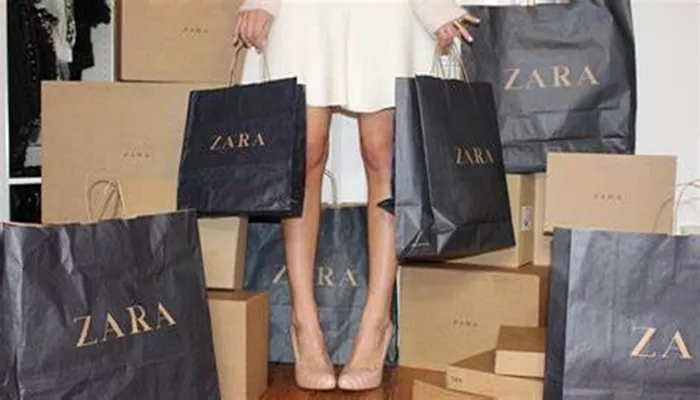In the fast-paced and highly competitive world of fashion, brand personality serves as a crucial differentiator. Zara, a global fashion giant, has managed to carve out a unique identity in the market. Understanding Zara’s brand personality not only offers insights into its business success but also reveals how it connects with consumers on an emotional level. This essay will explore the various facets that define Zara’s brand personality, examining its brand image, product characteristics, marketing strategies, and customer-centric approach.
Fast-Fashion Pioneer: The Speed Factor
Agile Supply Chain
Zara is renowned as a pioneer in the fast-fashion industry, and at the heart of its brand personality is its incredibly agile supply chain. The company has mastered the art of quickly translating runway trends into affordable, ready-to-wear clothing available in stores. Zara’s supply chain is designed to be highly responsive. It has its own manufacturing facilities in addition to outsourcing, which allows for greater control over production timelines. For example, Zara can design, produce, and distribute a new item in stores within as little as two weeks, compared to the average six-month cycle in the traditional fashion industry. This speed gives Zara a significant edge, enabling it to stay ahead of changing fashion trends.
Rapid Product Turnover
The brand’s commitment to fast-fashion is also evident in its rapid product turnover. Zara stores receive new shipments twice a week, constantly refreshing their inventory. This means that customers are always presented with new and exciting products. The sense of urgency created by this frequent restocking encourages consumers to visit Zara stores more often, as they fear missing out on the latest styles. For instance, a customer might visit a Zara store one week and find a particular dress. If they don’t purchase it immediately, there’s a high chance it will be gone the next week, replaced by a new collection.
Trend-Follower and Adopter
Quick Response to Fashion Trends
Zara closely monitors fashion trends from around the world. Its team of designers and trend-spotters are constantly on the lookout for emerging styles, whether it’s on the runways of Paris and Milan, in street fashion in major cities, or on social media platforms. Once a trend is identified, Zara quickly adapts it into its own product line. For example, if a particular color or pattern becomes popular in high-end fashion shows, Zara will incorporate it into its clothing designs within a short period. This ability to quickly respond to trends allows Zara to offer fashion-forward clothing to its customers at an affordable price.
Imitation with Adaptation
While Zara is often accused of imitating high-end fashion designs, it doesn’t simply copy. The brand takes inspiration from luxury brands and adapts the designs to suit a wider consumer base. Zara adds its own touches, such as different fabric choices, color palettes, or minor design modifications, to make the products more accessible and appealing to its target market. This approach enables Zara to offer a taste of high-fashion trends without the exorbitant price tags associated with luxury brands.
Affordable Fashion for All
Price-Point Appeal
One of the most prominent aspects of Zara’s brand personality is its commitment to providing affordable fashion. Zara offers a wide range of clothing items at various price points, making it accessible to a large number of consumers. From basic t-shirts and jeans to more elaborate dresses and outerwear, Zara ensures that its products are priced competitively. For example, a simple cotton t-shirt might cost around 15- 25, while a mid-range dress could be priced between 50-100. This affordability allows customers to experiment with different styles and update their wardrobes more frequently.
Value-for-Money Proposition
Zara doesn’t just offer low prices; it also provides value for money. The brand uses quality materials and pays attention to construction details, ensuring that its products are durable and well-made. Even though the prices are affordable, Zara doesn’t compromise on the overall quality of its clothing. This combination of reasonable prices and decent quality makes Zara a popular choice among consumers who are looking for stylish yet budget-friendly fashion options.
Store Experience and Visual Merchandising
In-Store Aesthetics
Zara stores are designed to create a unique and inviting shopping experience. The store layouts are carefully planned, with open spaces, well-lit displays, and clear signage. The interior design often features modern and minimalist elements, creating a sleek and contemporary atmosphere. For example, the use of white walls, polished floors, and strategic lighting helps to showcase the products in an attractive way. The stores are also organized in a logical manner, with different sections for men’s, women’s, and children’s clothing, making it easy for customers to navigate and find what they’re looking for.
Visual Merchandising
Zara’s visual merchandising is a key part of its brand personality. The brand uses creative window displays and in-store arrangements to attract customers. Window displays often feature mannequins dressed in the latest Zara collections, styled in a way that showcases the brand’s fashion-forward image. Inside the store, products are arranged in a visually appealing manner, with coordinated outfits and color-coded displays. This not only makes the shopping experience more enjoyable but also inspires customers to try new styles and combinations.
Conclusion
In conclusion, Zara’s brand personality is a unique blend of being a fast-fashion pioneer, a trend-follower with adaptation, an affordable fashion provider, a creator of an engaging store experience, and a brand with a global and inclusive appeal. These elements have allowed Zara to build a strong connection with consumers around the world. Zara’s ability to quickly respond to fashion trends, offer affordable yet quality clothing, and create an inviting shopping experience has made it a dominant force in the fashion industry.
Related topics:
- Whataburger Teams Up with Wrangler for New Clothing Line
- West Cumbrian Clothing Brand Marks 30 Years of Success
- Nike and Kim Kardashian’s SKIMS Team Up to Launch New Women’s Sports Brand

